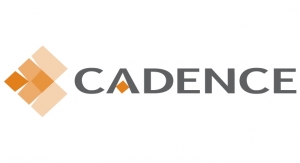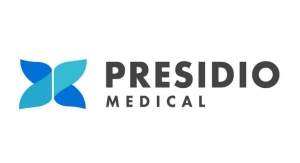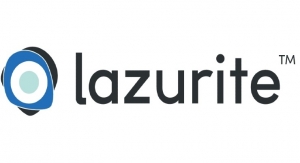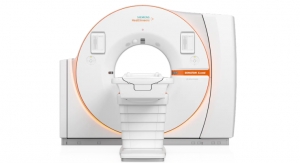Mark Crawford , Contributing Writer02.14.14
Medical devices continue to get smaller and more complex. That means, of course, that machining and laser processing technology must follow suit. It’s tough (and sometimes impossible) for standard machining and laser methods to produce the complicated geometries and contours that medical device OEMs are asking for, and still deliver super-tight tolerances and process repeatability. Tolerance of plus or minus 0.005 inches once was considered acceptable. Today, that value is closer to plus or minus 0.001-0.0005 inches. Medical devices also are being made from specialized materials such as 400-series stainless steels, carbides, ceramics and nitinol, all of which create their own unique processing challenges.
To keep pace, contract manufacturers must purchase (or design and build in-house) the advanced machining and laser-processing equipment they need to meet evolving customer demands.
“Machining is adapting to support these needs with more accurate machines, smaller, higher-tolerance tooling and machine adaptations to capitalize on those tools,” said Alan Connor, CEO for Cadence Inc., a Staunton, Va.-based contract manufacturer of surgical devices, specialty blades and needles. “Laser machining is also now frequently used to create finer features that were not previously possible with more traditional processes.”
Laser machining, in particular, has a number of “plusses,” industry experts said.
“Laser machining is faster, cleaner and less expensive than traditional machining,” added Khushroo A. Pastakia, assistant vice president of sales for Sahajanand Technologies, a manufacturer of advanced laser cutting systems based in Saiyedpura, Surat, India. “A wide variety of lasers can be used for machining. These include microsecond-pulsed infrared CO2 gas lasers at wavelengths between 9.3 and 11 micrometers, nanosecond-pulsed excimer gas lasers in the 157-353 nanometer UV (ultraviolet) wavelength range, and picosecond- to femtosecond-pulsed, solid-state lasers in the 266-1,064 nanometer wavelength range.”
Due to automated computer and robot controlling, laser material processing now includes laser-assisted forming (bending, coloring and rapid prototyping), joining (welding, soldering and brazing), machining (drilling, cutting and cleaning), and surface engineering (hardening, annealing and alloying).
“For example,” said Pastakia, “our Stentmaster laser system provides precision micro-machining and metal-cutting capabilities. The system is equipped with a 100-watt fiber laser source that produces a wavelength of 1,090 plus or minus 5 nanometers, with a cutting speed up to 4 millimeters per second.”
Hardware improvements for laser controllers have made lasers easier to use and provide enhanced machining capabilities—especially speed.
“Advancements include improved electrical efficiency and hardware size, as well as the output power efficiency for the newest diode-, disk- and fiber-based technologies,” said Adam Nelson, laser business manager for R&D/Leverage, a Lee’s Summit, Mo.-based mold manufacturer and structural brand development firm. “These improvements allow the user interface to become more intuitive and flexible. Other benefits are decreased maintenance, increased usability and increasing scope of capability. Generally, when lasers are replacing another technology or process, we see a three-to-four-times decrease in processing time.”
As a result of these advancements, the capabilities and reliability of lasers have improved dramatically in recent years, without big cost increases—hopefully this trend will continue, making high-quality laser equipment more affordable for medical device manufacturers.
What OEMs Want
OEMs basically want it all from their machining/laser processing contract manufacturers—this includes faster turnaround times, quicker speed to market, flexible smaller-lot production cells, and ever-increasing quality requirements. They also want prototypes delivered in days, not weeks. OEMs constantly are looking for ways to shorten their supply chains, which often means finding companies that can provide an expanded range of services beyond producing parts, such as designing and building complex assemblies, or even the entire product or device. They also want their vendors to operate within scalable and validated processes that meet their own stringent quality system requirements.
Manufacturers are responding to these needs by investing in more specialized equipment. For example, Cadence has added laser cutting, a multi-axis Swiss lathe, and more grinding options to its services. These improved capabilities yield higher product quality and reduce total costs. Cadence can provide high-speed cutting of 0.050-0.060-inch stainless steels with a very low kerf angle and minimal dross.
“Thicker sheet steels are typically cut with industrial laser systems or precision machining methods like wire electrical discharge machining (EDM),” said Connor. “We combined industrial lasers with precision machine controls to deliver EDM-level precision, but at a process cost that is much closer to that of an industrial laser.”
Often, creativity is what it takes to find the right solution, such as combining technologies, creating unique fixturing tools, or even inventing innovative equipment and processes that exceed what standard, off-the-shelf equipment can provide—all while controlling costs. Another way to keep costs down is combining more expensive, specialty materials with more common, less-expensive materials.
“For example, we have begun to develop capabilities to join dissimilar metals together in a precise and cost-effective manner, which we typically suggest to customers as part of our early project-engagement approach,” said Connor. “We are also investing in our own R&D to further develop these capabilities. These advanced materials can be difficult to work with and require advanced manufacturing techniques to machine and assemble them with the common component materials.”
Meeting lower-cost expectations for complex parts and products sometimes can be achieved by coming up with a process that eliminates assembly steps or secondary operations, such as deburring. Burrs are costly to remove and conventional deburring methods are time-consuming and also can damage tolerances, especially on very small parts. This is why a process called electrochemical grinding (ECG) has become popular for small parts such as slotted needles, stylets and trocars.
“ECG has a niche as the only truly burr-free process,” indicated Tom Travia, director of business development for Tridex Technology Ltd., a Philadelphia, Pa.-based provider of electrochemical grinding and cutoff machinery and ECG grinding services. “Even though EDM, laser, water jet and conventional grinding may not leave a big burr, ECG cutting can be set up to leave a very rounded edge or a very sharp, but burr-free, edge, by varying the cutting parameters. There is also no recast layer or heat affect zone that results from the high temperatures created by EDM or laser. ECG is also preferred for plain tube cutoff because production time is so much faster—up to 10 times faster than EDM.”
To create components, sub-assemblies and finished devices that require smaller parts, tighter tolerances, and specialty materials, shops must automate more and eliminate multiple setups and post-processing steps. Machining and laser processing must keep up with this demand by creating machines that have these capabilities.
“Achieving this requires a combination of fundamental knowledge of materials and processing methods with a willingness to take a ‘clean sheet of paper’ approach to come up with an economical way to create these complex components,” said Connor. “For example, we are currently developing a custom set of equipment and processes for a customer that will eliminate multiple suppliers and process steps, improve quality and reduce cost by 20 to 40 percent.”
New medical device designs often include a large number of tubular components. Pulse Systems Inc., a Concord, Calif.-based provider of precision laser cutting and processing, specializes in cutting thin-wall tubular metal components (typically stainless steel or nitinol, but sometimes cobalt chromium, platinum, titanium, and other medical-grade materials). Its laser systems are capable of executing the type of complex, intricate and precise cutting patterns that typically are required for cardiovascular stents and other implantable devices.
President and CEO Herb Bellucci has observed that quote requests increasingly require multiple components and use multiple services, rather than just simple machining or laser cutting of individual parts.
“As customers request higher levels of integration from suppliers, such as complete components and sub-assemblies, suppliers must provide multiple services to stay competitive,” said Bellucci. “For example, Pulse Systems has added small-part CNC (computer numeric control) machining and laser welding to its capabilities in laser cutting so that we can provide a more complete set of solutions for our customers.”
Finer Features, Tighter Tolerances
With the trend toward minimally invasive procedures, medical device design engineers are pushing for smaller devices, which require smaller parts, finer features, tinier holes, and ever-tighter tolerances. Some design specifications call for holes as small as 0.001 inches in diameter with an accuracy of 0.0001 to 0.0002 inches.
“The challenge is to meet these requirements with machine tools and capabilities that can provide the solutions,” said Bellucci. “In conventional CNC machining, the trends involve software simulation capabilities, very small tools, high-speed spindles and rigid equipment capable of making these small parts. In laser machining, new and improved laser sources, such as high-powered fiber lasers and short-pulsed lasers, are at the leading edge of the technology trends.”
The increasing complexity of medical device designs with tight tolerances is creating a greater need for multi-axis laser machines in laser processing.
“Over the last two years, four-axis and five-axis laser cutters have become more common in the industry,” said Calvin Kuo, general manager for Peter’s Technology Co. Ltd., a Wu Jiang City, China-based contract manufacturer of medical device assemblies and precision components. “Many of the product requirements we receive from our medical OEM customers require a four-axis laser cutter. The multi-axis machine reduces the need for multiple setups, improving consistency and repeatability and reducing cycle time. With a four-axis cutter, we can offer our customers the ability to make more complex parts on one machine, which saves time and money.”
A small but critical step in machining is fixturing—holding the piece in place during the machining operation. This is especially challenging when producing complex parts. An efficient fixturing system saves time and improves the efficiency and accuracy of the process.
Fixturing is actually a very complex subject that requires creative engineering thinking.
“The design of fixtures is both an art form and a science,” said Kuo. “There is no end to improving a fixture. Our engineers say there are always new materials and new technologies that become available and can be utilized to improve a fixture over the long term.”
One of the fastest-growing requests in laser processing is laser texturing. R&D/Leverage uses lasers to texture complex, three-dimensional surfaces in blow and injection mold tolling components.
“We are seeing more requests for both functional and aesthetic textures,” said Nelson. “An example of the functional side would be a texture that is on a surface of a plastic part that will later be sonic-welded or friction-welded to another plastic component.”
Lasers also have been hugely successful for machining extremely small features in minutes, compared to spending countless hours making these parts with hard machining or the EDM sink process.
“Typical features are small radii and support structures in cavities,” continued Nelson. “We can currently process down to 0.012 millimeters on a regular basis, which greatly expands design capability for medical device engineers.”
Outside the Box
Contract manufacturers must be knowledgeable and respond quickly to customer demands, coming up with the right solution in sometimes just a matter of days. This requires an ability to think outside the box and developing innovative processes and tools when needed, such as combining different technologies into a single piece of equipment.
Tridex Technology, for example, has developed a combination of machine and grinding wheel improvements to produce multiple-slot grinding of thin stainless foil parts for a major medical device OEM customer.
“We were challenged to develop a process to get complex, burr-free parts in high production with tolerances of a few microns,” said Travia. “Advances in power supply technology, electrolyte flow control and robust, highly accurate mechanical systems helped us achieve that goal.”
A customer recently contacted Peter’s Technology about producing a small, complex part (2.2 x 14 millimeters) that required very tight tolerances in the 0.001- to 0.002-inch range. The part previously only had been made by machining, at a fairly high cost.
“We created a spiral cutter for a spinal surgical device that can be used for both machining and laser processing,” said Kuo. “The cutter was used with the CNC lathe/milling machine to create the multi-contour blanks, followed by laser cutting to create the flutes, at a significant cost savings.”
Connor pointed out that OEMs still design unnecessary limitations into the manufacturing methods of their custom devices. Laser technologies, machining methods and materials all are advancing so rapidly that an ideal manufacturing process plan from last year is unlikely to be the best choice today. That’s why it is important for OEMs to collaborate with key vendors up front during the design process to assess design for manufacturability.
“Unless the customer is fully versed in all state-of-the-art manufacturing methods that could be applied to their device, and all of the suitable materials available, they could easily be restricting the ultimate performance of the device or increasing the cost to make it,” said Connor. “A better choice would be to specify the design intent and determine all absolute restrictions. Once this is established, the customer should approach prospective suppliers for their expertise in developing a manufacturing strategy and finally a completed device design.”
This, of course, is the essence of design for manufacturability. By discussing all aspects of device design, intended function, materials and manufacturing options up front in the earliest design stages with key vendors, the best possible manufacturing process can be developed. The modifications don’t always have to be complicated—sometimes it is as straightforward as the type of tooling. For example, an engineer’s design may require specialized or unique tools, when standard tools can easily achieve the dimensional requirements.
“The most successful engineers we work with spend time during the design process considering design for manufacturability,” said Kuo. “This includes avoiding buying special tools whenever possible and letting us use standard tools. This is important for saving money and giving the client a more robust product design that translates to better lead times and a lower cost.”
Not only does design for manufacturability result in the best possible product for the client, it is also an opportunity to educate clients on the latest technologies. For example, many OEM engineers are not familiar with the rapid advances in lasers, or their wide range of production capabilities.
“Their general understanding is that lasers are used for marking part numbers, trademarks and barcodes on parts,” said Nelson. “We are constantly working internally and externally with clients to educate them on the process capability we have for laser machining, texturing and engraving. The biggest hurdle is convincing clients the laser is a stabile, reliably, accurate and repeatable process.”
Pulse Systems’ Bellucci agreed.
“Most of our experienced customers understand the capabilities and limitations of laser cutting, but many newer customers do not understand how laser machining works,” he said. “Some design engineers may not realize that lasers are generally best used to do through-cuts, rather than partial cuts through the material, so that grooves and steps and chamfers require secondary processing by some other means, making the part much more expensive.”
Flexible parts produced via laser cutting are difficult to model.
“Customers often expect that we ‘know’ how the part will behave after it is machined,” Bellucci continued. “However, analytical tools such as finite-element analysis software, specifically configured for tubular structures, would be very useful for determining behavior.”
Lasers also cut sample parts very quickly, which helps customers at the quote stage and also speeds up process development. This allows customers to evaluate multiple configurations with minimal non-recurring engineering (NRE) charges.
“In many cases, laser machining, combined with flexible tooling, helps minimize NRE costs,” said Connor. “The tooling is generally easily adaptable, which makes it easier to develop complex CNC programs quickly.”
Another process that OEM engineers aren’t as familiar with is ECG, especially as an alternative to conventional machining, laser or EDM.
“Every technology has its sweet spot and tube cutoff and grinding is especially suited to the ECG process,” said Travia. “Although tubing can be cut using other methods, the productivity and true burr-free quality of the ECG process is unmatched. The move into point grinding and other sharpening with the ECG process is also a new concept to many OEMs. The advantages of fast stock removal and low wheel wear make this a worthwhile option for specialty needle and surgical tool applications.”
Mark Crawford is a full-time freelance business, marketing and communications writer based in Madison, Wis. He can be reached at mark.crawford@charter.net.
To keep pace, contract manufacturers must purchase (or design and build in-house) the advanced machining and laser-processing equipment they need to meet evolving customer demands.
“Machining is adapting to support these needs with more accurate machines, smaller, higher-tolerance tooling and machine adaptations to capitalize on those tools,” said Alan Connor, CEO for Cadence Inc., a Staunton, Va.-based contract manufacturer of surgical devices, specialty blades and needles. “Laser machining is also now frequently used to create finer features that were not previously possible with more traditional processes.”
Laser machining, in particular, has a number of “plusses,” industry experts said.
“Laser machining is faster, cleaner and less expensive than traditional machining,” added Khushroo A. Pastakia, assistant vice president of sales for Sahajanand Technologies, a manufacturer of advanced laser cutting systems based in Saiyedpura, Surat, India. “A wide variety of lasers can be used for machining. These include microsecond-pulsed infrared CO2 gas lasers at wavelengths between 9.3 and 11 micrometers, nanosecond-pulsed excimer gas lasers in the 157-353 nanometer UV (ultraviolet) wavelength range, and picosecond- to femtosecond-pulsed, solid-state lasers in the 266-1,064 nanometer wavelength range.”
Due to automated computer and robot controlling, laser material processing now includes laser-assisted forming (bending, coloring and rapid prototyping), joining (welding, soldering and brazing), machining (drilling, cutting and cleaning), and surface engineering (hardening, annealing and alloying).
“For example,” said Pastakia, “our Stentmaster laser system provides precision micro-machining and metal-cutting capabilities. The system is equipped with a 100-watt fiber laser source that produces a wavelength of 1,090 plus or minus 5 nanometers, with a cutting speed up to 4 millimeters per second.”
Hardware improvements for laser controllers have made lasers easier to use and provide enhanced machining capabilities—especially speed.
“Advancements include improved electrical efficiency and hardware size, as well as the output power efficiency for the newest diode-, disk- and fiber-based technologies,” said Adam Nelson, laser business manager for R&D/Leverage, a Lee’s Summit, Mo.-based mold manufacturer and structural brand development firm. “These improvements allow the user interface to become more intuitive and flexible. Other benefits are decreased maintenance, increased usability and increasing scope of capability. Generally, when lasers are replacing another technology or process, we see a three-to-four-times decrease in processing time.”
As a result of these advancements, the capabilities and reliability of lasers have improved dramatically in recent years, without big cost increases—hopefully this trend will continue, making high-quality laser equipment more affordable for medical device manufacturers.
What OEMs Want
OEMs basically want it all from their machining/laser processing contract manufacturers—this includes faster turnaround times, quicker speed to market, flexible smaller-lot production cells, and ever-increasing quality requirements. They also want prototypes delivered in days, not weeks. OEMs constantly are looking for ways to shorten their supply chains, which often means finding companies that can provide an expanded range of services beyond producing parts, such as designing and building complex assemblies, or even the entire product or device. They also want their vendors to operate within scalable and validated processes that meet their own stringent quality system requirements.
Manufacturers are responding to these needs by investing in more specialized equipment. For example, Cadence has added laser cutting, a multi-axis Swiss lathe, and more grinding options to its services. These improved capabilities yield higher product quality and reduce total costs. Cadence can provide high-speed cutting of 0.050-0.060-inch stainless steels with a very low kerf angle and minimal dross.
“Thicker sheet steels are typically cut with industrial laser systems or precision machining methods like wire electrical discharge machining (EDM),” said Connor. “We combined industrial lasers with precision machine controls to deliver EDM-level precision, but at a process cost that is much closer to that of an industrial laser.”
Often, creativity is what it takes to find the right solution, such as combining technologies, creating unique fixturing tools, or even inventing innovative equipment and processes that exceed what standard, off-the-shelf equipment can provide—all while controlling costs. Another way to keep costs down is combining more expensive, specialty materials with more common, less-expensive materials.
“For example, we have begun to develop capabilities to join dissimilar metals together in a precise and cost-effective manner, which we typically suggest to customers as part of our early project-engagement approach,” said Connor. “We are also investing in our own R&D to further develop these capabilities. These advanced materials can be difficult to work with and require advanced manufacturing techniques to machine and assemble them with the common component materials.”
Meeting lower-cost expectations for complex parts and products sometimes can be achieved by coming up with a process that eliminates assembly steps or secondary operations, such as deburring. Burrs are costly to remove and conventional deburring methods are time-consuming and also can damage tolerances, especially on very small parts. This is why a process called electrochemical grinding (ECG) has become popular for small parts such as slotted needles, stylets and trocars.
“ECG has a niche as the only truly burr-free process,” indicated Tom Travia, director of business development for Tridex Technology Ltd., a Philadelphia, Pa.-based provider of electrochemical grinding and cutoff machinery and ECG grinding services. “Even though EDM, laser, water jet and conventional grinding may not leave a big burr, ECG cutting can be set up to leave a very rounded edge or a very sharp, but burr-free, edge, by varying the cutting parameters. There is also no recast layer or heat affect zone that results from the high temperatures created by EDM or laser. ECG is also preferred for plain tube cutoff because production time is so much faster—up to 10 times faster than EDM.”
To create components, sub-assemblies and finished devices that require smaller parts, tighter tolerances, and specialty materials, shops must automate more and eliminate multiple setups and post-processing steps. Machining and laser processing must keep up with this demand by creating machines that have these capabilities.
“Achieving this requires a combination of fundamental knowledge of materials and processing methods with a willingness to take a ‘clean sheet of paper’ approach to come up with an economical way to create these complex components,” said Connor. “For example, we are currently developing a custom set of equipment and processes for a customer that will eliminate multiple suppliers and process steps, improve quality and reduce cost by 20 to 40 percent.”
New medical device designs often include a large number of tubular components. Pulse Systems Inc., a Concord, Calif.-based provider of precision laser cutting and processing, specializes in cutting thin-wall tubular metal components (typically stainless steel or nitinol, but sometimes cobalt chromium, platinum, titanium, and other medical-grade materials). Its laser systems are capable of executing the type of complex, intricate and precise cutting patterns that typically are required for cardiovascular stents and other implantable devices.
President and CEO Herb Bellucci has observed that quote requests increasingly require multiple components and use multiple services, rather than just simple machining or laser cutting of individual parts.
“As customers request higher levels of integration from suppliers, such as complete components and sub-assemblies, suppliers must provide multiple services to stay competitive,” said Bellucci. “For example, Pulse Systems has added small-part CNC (computer numeric control) machining and laser welding to its capabilities in laser cutting so that we can provide a more complete set of solutions for our customers.”
Finer Features, Tighter Tolerances
With the trend toward minimally invasive procedures, medical device design engineers are pushing for smaller devices, which require smaller parts, finer features, tinier holes, and ever-tighter tolerances. Some design specifications call for holes as small as 0.001 inches in diameter with an accuracy of 0.0001 to 0.0002 inches.
“The challenge is to meet these requirements with machine tools and capabilities that can provide the solutions,” said Bellucci. “In conventional CNC machining, the trends involve software simulation capabilities, very small tools, high-speed spindles and rigid equipment capable of making these small parts. In laser machining, new and improved laser sources, such as high-powered fiber lasers and short-pulsed lasers, are at the leading edge of the technology trends.”
The increasing complexity of medical device designs with tight tolerances is creating a greater need for multi-axis laser machines in laser processing.
“Over the last two years, four-axis and five-axis laser cutters have become more common in the industry,” said Calvin Kuo, general manager for Peter’s Technology Co. Ltd., a Wu Jiang City, China-based contract manufacturer of medical device assemblies and precision components. “Many of the product requirements we receive from our medical OEM customers require a four-axis laser cutter. The multi-axis machine reduces the need for multiple setups, improving consistency and repeatability and reducing cycle time. With a four-axis cutter, we can offer our customers the ability to make more complex parts on one machine, which saves time and money.”
A small but critical step in machining is fixturing—holding the piece in place during the machining operation. This is especially challenging when producing complex parts. An efficient fixturing system saves time and improves the efficiency and accuracy of the process.
Fixturing is actually a very complex subject that requires creative engineering thinking.
“The design of fixtures is both an art form and a science,” said Kuo. “There is no end to improving a fixture. Our engineers say there are always new materials and new technologies that become available and can be utilized to improve a fixture over the long term.”
One of the fastest-growing requests in laser processing is laser texturing. R&D/Leverage uses lasers to texture complex, three-dimensional surfaces in blow and injection mold tolling components.
“We are seeing more requests for both functional and aesthetic textures,” said Nelson. “An example of the functional side would be a texture that is on a surface of a plastic part that will later be sonic-welded or friction-welded to another plastic component.”
Lasers also have been hugely successful for machining extremely small features in minutes, compared to spending countless hours making these parts with hard machining or the EDM sink process.
“Typical features are small radii and support structures in cavities,” continued Nelson. “We can currently process down to 0.012 millimeters on a regular basis, which greatly expands design capability for medical device engineers.”
Outside the Box
Contract manufacturers must be knowledgeable and respond quickly to customer demands, coming up with the right solution in sometimes just a matter of days. This requires an ability to think outside the box and developing innovative processes and tools when needed, such as combining different technologies into a single piece of equipment.
Tridex Technology, for example, has developed a combination of machine and grinding wheel improvements to produce multiple-slot grinding of thin stainless foil parts for a major medical device OEM customer.
“We were challenged to develop a process to get complex, burr-free parts in high production with tolerances of a few microns,” said Travia. “Advances in power supply technology, electrolyte flow control and robust, highly accurate mechanical systems helped us achieve that goal.”
A customer recently contacted Peter’s Technology about producing a small, complex part (2.2 x 14 millimeters) that required very tight tolerances in the 0.001- to 0.002-inch range. The part previously only had been made by machining, at a fairly high cost.
“We created a spiral cutter for a spinal surgical device that can be used for both machining and laser processing,” said Kuo. “The cutter was used with the CNC lathe/milling machine to create the multi-contour blanks, followed by laser cutting to create the flutes, at a significant cost savings.”
Connor pointed out that OEMs still design unnecessary limitations into the manufacturing methods of their custom devices. Laser technologies, machining methods and materials all are advancing so rapidly that an ideal manufacturing process plan from last year is unlikely to be the best choice today. That’s why it is important for OEMs to collaborate with key vendors up front during the design process to assess design for manufacturability.
“Unless the customer is fully versed in all state-of-the-art manufacturing methods that could be applied to their device, and all of the suitable materials available, they could easily be restricting the ultimate performance of the device or increasing the cost to make it,” said Connor. “A better choice would be to specify the design intent and determine all absolute restrictions. Once this is established, the customer should approach prospective suppliers for their expertise in developing a manufacturing strategy and finally a completed device design.”
This, of course, is the essence of design for manufacturability. By discussing all aspects of device design, intended function, materials and manufacturing options up front in the earliest design stages with key vendors, the best possible manufacturing process can be developed. The modifications don’t always have to be complicated—sometimes it is as straightforward as the type of tooling. For example, an engineer’s design may require specialized or unique tools, when standard tools can easily achieve the dimensional requirements.
“The most successful engineers we work with spend time during the design process considering design for manufacturability,” said Kuo. “This includes avoiding buying special tools whenever possible and letting us use standard tools. This is important for saving money and giving the client a more robust product design that translates to better lead times and a lower cost.”
Not only does design for manufacturability result in the best possible product for the client, it is also an opportunity to educate clients on the latest technologies. For example, many OEM engineers are not familiar with the rapid advances in lasers, or their wide range of production capabilities.
“Their general understanding is that lasers are used for marking part numbers, trademarks and barcodes on parts,” said Nelson. “We are constantly working internally and externally with clients to educate them on the process capability we have for laser machining, texturing and engraving. The biggest hurdle is convincing clients the laser is a stabile, reliably, accurate and repeatable process.”
Pulse Systems’ Bellucci agreed.
“Most of our experienced customers understand the capabilities and limitations of laser cutting, but many newer customers do not understand how laser machining works,” he said. “Some design engineers may not realize that lasers are generally best used to do through-cuts, rather than partial cuts through the material, so that grooves and steps and chamfers require secondary processing by some other means, making the part much more expensive.”
Flexible parts produced via laser cutting are difficult to model.
“Customers often expect that we ‘know’ how the part will behave after it is machined,” Bellucci continued. “However, analytical tools such as finite-element analysis software, specifically configured for tubular structures, would be very useful for determining behavior.”
Lasers also cut sample parts very quickly, which helps customers at the quote stage and also speeds up process development. This allows customers to evaluate multiple configurations with minimal non-recurring engineering (NRE) charges.
“In many cases, laser machining, combined with flexible tooling, helps minimize NRE costs,” said Connor. “The tooling is generally easily adaptable, which makes it easier to develop complex CNC programs quickly.”
Another process that OEM engineers aren’t as familiar with is ECG, especially as an alternative to conventional machining, laser or EDM.
“Every technology has its sweet spot and tube cutoff and grinding is especially suited to the ECG process,” said Travia. “Although tubing can be cut using other methods, the productivity and true burr-free quality of the ECG process is unmatched. The move into point grinding and other sharpening with the ECG process is also a new concept to many OEMs. The advantages of fast stock removal and low wheel wear make this a worthwhile option for specialty needle and surgical tool applications.”
Mark Crawford is a full-time freelance business, marketing and communications writer based in Madison, Wis. He can be reached at mark.crawford@charter.net.



























